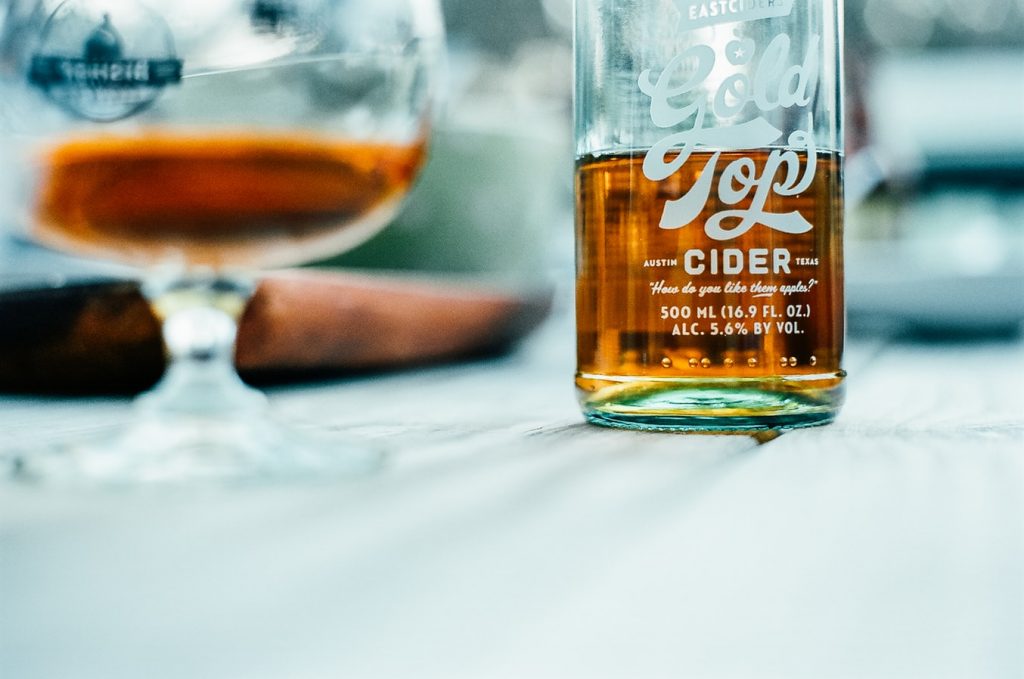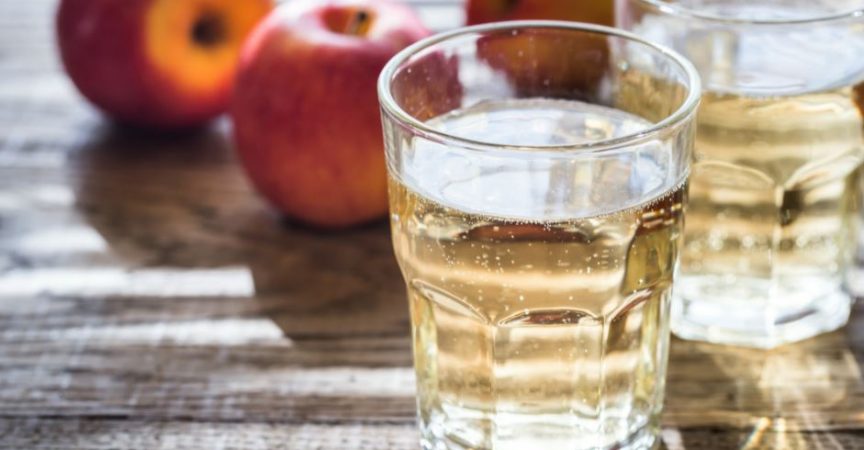The Hard Facts on Hard Cider
Apples are iconic—their ripening heralds the arrival of the autumn season. The smell of warm pies wafts from ovens and farmers market stands while fresh-picked varietals plucked from the bushel are at their crispest. But one of Canada’s favourite results of the fall’s apple harvest is cider—the alcoholic variety, that is. Sometimes referred to as hard cider to differentiate it from the unfiltered, non-alcoholic juice, this beverage category has boomed in popularity in recent years. Look to the opening of cider-specific bars, a host of new cideries opening in the country, the popularity of cider festivals (read about the Toronto Cider Festival on page 21) and the introduction of the Canadian Cider Awards, which is now in its second year. In Ontario, according to Agriculture and Agri-Food Canada, the craft cider sector saw a 42 per cent increase in sales at the LCBO in 2017 to 2018 compared to the year prior, amounting to over $11.5 million in sales.
As cideries are gearing up for their peak production period, now is a great time to consider adding cider to your beverage menu, or to beef up your existing cider offerings. Here are a few things we thought you should know about cider.
PRODUCTION
Ever wonder how cider is made? Stephanie Guest, brand educator for Strongbow, shares the steps for production of the world’s top-selling cider.
Step 1: Grow & Harvest
Apples are handpicked or shaken and collected mechanically by tractors. This step happens between the end of August and mid-to-late November when the fruit is at its maximum sugar content.
Step 2: Rinse & Repeat
Apples are collected and washed twice. During this stage, rotten apples are removed through a dunk test: fresh apples float while rotten apples sink.
Step 3: Mill & Press
Fresh apples are milled and crushed by the bushel (equivalent to 35.2 litres) to obtain fresh apple juice.
Step 4: Add Yeast & Ferment
The apple juice spends five to twelve days fermenting with special cider yeast that converts the natural fruit sugars into alcohol with a temperature control of 19 to 23 degrees Celsius. By the end of this stage, no sugar remains and the yeast is removed.
Step 5: Filter & Blend
Yeast and other sediment are filtered out, leaving the cider with a clean, golden look. A variety of ciders and apple juices may be blended together at this stage.
Step 6: Fill & Pack
Finally, a blast of carbonation (CO2) is
added before the can or bottle is sealed.

TYPES OF CIDER
While cider styles may not be as well-known as the pale ales and lagers of the beer category, cideries are beginning to branch out into producing more distinct varieties. Here are a few to look out for:
Dry
Ciders which are labelled as ‘dry’ will be less sweet and more tart with a quick finish. Dry ciders tend to be a cidery’s most traditional, or flagship, variety.
Semi-sweet or Sweet
As the name suggests, expect a higher sugar content with sweet or semi-sweet ciders. A good introductory cider for those that find traditional ciders too tart.
Rosé
Following the popularity of rosé wine, these blush-hued ciders typically get their colouring from the addition of berry juice. Rosé ciders tend to skew sweeter.
Farmhouse
Using techniques like wild fermentation and barrel aging, farmhouse ciders have a more complex, funky flavour and aroma with a longer-lasting finish.
Sidra
Spanish for ‘cider’, this style made predominantly in the Basque and Asturias regions of Spain is known for being tart, flat, funky and very dry.
Ice
Like ice wine, ice cider is made by
pressing frozen apples, extracting a sweeter and more concentrated juice.

HOW TO SERVE CIDER
We chat with Sarah McMahon, bar manager of Her Father’s Cider Bar in Toronto, to get some tips for serving cider.
What is the ideal temperature for serving cider?
Generally, we serve cider chilled at around the same temperature as white wine, though you’ll want to let dry, more tannic styles warm up a bit to allow any complex aromas and flavours to shine through.
When is it appropriate to serve cider over ice?
What styles are best served with ice and which should always be served without?
Typically, ciders should be served without ice, but some cider makers offer the option. For example, L.A.-based 101 Cider House, who specialize in sour cider, suggest adding ice to provide dilution if you’re finding the drink too punchy.
What is the ideal glassware for enjoying cider?
A tulip glass is our go-to for any draught ciders. However, we serve our finer bottled ciders in a wine glass. Aromatics account for a big part of the taste experience, and the tapered mouth of this vessel allows the aromas to be funnelled straight into your nose.
For a flight of ciders, what is the best order of styles to taste?
When serving a cider flight, we recommend that you drink them from driest to sweetest. High residual sugars can overwhelm your taste buds. If you drink sweet first, any drier ciders you sample afterwards may taste bland. If the entire flight is comprised of dry ciders, I would recommend starting with simple ciders fermented with apples only, and ending with whichever is the most intense and boldly flavoured.
How do you serve bottles of cider that are shared between guests?
When a guest orders a sharing bottle, we present it much like you would a bottle of wine, opening and serving it tableside, and storing it in a wine bucket, though you may want to leave any dry, tannic ciders on the table to warm up slightly.
The Spanish sidra, however, requires a different type of tableside presentation. Because this style of cider is uncarbonated, we use either a special pouring spout or a porrón wine pitcher to pour the cider from a great height, allowing air bubbles into the drink and opening up the aromas and flavours.









